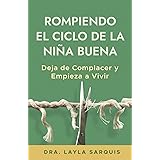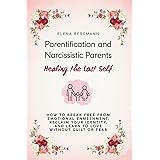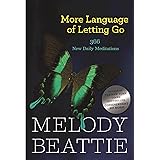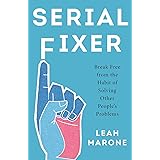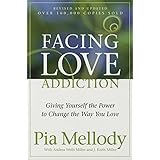We’ve all been there: a long day, a stressful week, and suddenly, the idea of browsing online or hitting the stores feels incredibly appealing. Perhaps you stumbled upon that perfect pair of shoes or a gadget you ‘just had to have,’ and for a fleeting moment, the world felt a little brighter. This initial allure of retail therapy is a common human experience. However, as the accompanying video insightfully highlights, there’s a significant difference between enjoying a shopping spree and being genuinely “addicted to shopping.” Understanding this distinction is not merely academic; it’s crucial for our financial well-being, mental health, and relationships.
The term “addicted to shopping” might seem casual, but it points to a serious behavioral challenge. It’s when the act of buying goods or services transcends mere desire or need, morphing into a compulsive behavior that feels impossible to control, despite clear negative consequences. This isn’t just about spending too much; it’s about a deep-seated pattern that can disrupt an individual’s life in profound ways.
Deconstructing the Nature of Shopping Addiction
To truly grasp what it means to be a compulsive shopper, we must first recognize that this isn’t simply about a love for fashion or a penchant for new gadgets. Instead, it’s about the underlying psychological mechanisms. Imagine someone who constantly feels an urge to buy, a relentless pull towards stores or online checkout pages, even when they know they shouldn’t.
This behavior is formally recognized by some as Compulsive Buying Disorder (CBD), a behavioral addiction characterized by excessive, uncontrollable, and often irrational buying. It’s not the items themselves that are the primary focus, but rather the act of acquiring them. The fleeting rush of making a purchase can become a powerful, albeit temporary, escape from deeper emotional discomforts or stressors. Yet, this temporary high is often followed by a crash of guilt, shame, and anxiety, perpetuating a destructive cycle.
The Psychological Triggers Behind Compulsive Shopping
Several factors can contribute to the development of a shopping addiction, making it a complex issue with various roots. While the video touched upon emotional fulfillment, the thrill of the hunt, and social pressures, let’s delve deeper into these catalysts.
-
Emotional Regulation and Retail Therapy
For many individuals struggling with compulsive shopping, the act serves as a maladaptive coping mechanism. When feeling angry, stressed, depressed, anxious, or even just bored, shopping can offer a temporary diversion. Imagine if every time you felt a pang of sadness, a new purchase offered a momentary lift, a surge of dopamine that temporarily masked the discomfort. This can create a powerful, albeit unhealthy, association between shopping and emotional relief. However, the relief is short-lived, and the underlying emotions remain unaddressed, often intensifying after the shopping high wears off.
-
The Thrill of the Acquisition
Beyond emotional regulation, there’s the undeniable excitement of finding a “deal” or acquiring something new. This “thrill of the hunt” can be incredibly addictive. The anticipation of a package arriving, the unwrapping of a new item, or the satisfaction of a successful bargain can trigger pleasure centers in the brain. For some, the pursuit itself, the scrolling through endless online catalogs or wandering through mall aisles, becomes the primary draw, rather than the utility of the purchased item. This can lead to a closet full of unopened or unworn clothes, a common sign of addicted to shopping behavior.
-
Social Pressures and Advertising Influence
In our hyper-connected world, social pressures can exert immense influence. The desire to “keep up with the Joneses,” or more accurately, with social media influencers and carefully curated online lives, can fuel compulsive buying. Consider the constant stream of advertisements tailored to your online activity, coupled with the fear of missing out (FOMO) on trends. It’s easy to feel inadequate without the latest gadgets, fashion, or home decor. Advertising campaigns are often designed to tap into our insecurities and aspirations, subtly pushing us towards purchasing as a means to achieve happiness, status, or acceptance.
Identifying the Signs of a Shopping Addiction
Recognizing the red flags is the initial, crucial step toward addressing compulsive shopping. The video accurately outlined key indicators, but understanding the nuances of these behaviors can provide a clearer picture. It’s not about making a single extravagant purchase; it’s about a consistent pattern of behavior that negatively impacts one’s life.
-
Persistent Overspending and Financial Strain
One of the most immediate and impactful signs is consistently spending beyond one’s budget. This often manifests as accumulating significant debt, neglecting essential bills, or even borrowing money to fund purchases. Imagine the stress of facing mounting credit card statements, wondering how you’ll make ends meet, all while new, unnecessary items sit unopened in your home. This financial distress can quickly spiral, leading to severe consequences for an individual’s long-term stability.
-
Emotional Triggers for Shopping
As mentioned, using shopping as a go-to response for negative emotions is a strong indicator. If you find yourself consistently heading to the mall or online stores whenever you feel angry, sad, lonely, or anxious, it’s worth examining the underlying pattern. This isn’t a healthy coping mechanism but rather a temporary avoidance strategy that ultimately compounds stress rather than alleviates it.
-
Hoarding Unused Items and Secrecy
A tell-tale sign is having numerous items that are still in their original packaging, unworn, or unused, often hidden away. This points to the idea that the joy was in the acquisition, not the use. Furthermore, hiding purchases, shopping habits, or financial bills from family members or partners is a significant red flag. This secrecy often stems from shame and guilt, indicating a deep awareness that the behavior is problematic and needs to be concealed.
-
Loss of Control and Failed Attempts to Stop
The defining characteristic of any addiction is the feeling of a loss of control. Despite recognizing the negative consequences and perhaps even attempting to cut back or stop shopping, the individual finds themselves unable to do so. This can lead to feelings of frustration, helplessness, and a worsening cycle of guilt and shame. Repeated efforts to stop, only to relapse, are strong indicators that the behavior has become compulsive and out of control.
The Far-Reaching Consequences of Compulsive Buying
The impact of being addicted to shopping extends far beyond just a cluttered closet or a maxed-out credit card. These behaviors can erode the foundations of a person’s life, affecting their finances, relationships, and overall mental health. When shopping becomes a priority above all else, other crucial aspects of life inevitably suffer.
Financially, the consequences are often devastating. Debt can accumulate rapidly, leading to constant worry, collection calls, and even bankruptcy. This financial instability can prevent individuals from achieving long-term goals like homeownership, saving for retirement, or providing for their families. However, the financial toll is often just one piece of a larger puzzle.
Relationships frequently bear the brunt of a shopping addiction. Secrecy about purchases can breed distrust between partners, leading to arguments, resentment, and a breakdown in communication. Friends and family members may feel hurt or neglected as the individual’s focus shifts increasingly towards shopping. Isolation can become a common outcome, as the individual pulls away to hide their habits or avoids social situations that don’t involve shopping.
Mentally, the toll is profound. While shopping may provide a temporary escape from negative emotions, the aftermath is typically filled with intensified anxiety, guilt, shame, and depression. Self-esteem can plummet as individuals feel a deep sense of failure and a loss of control over their own lives. This can create a vicious cycle, where negative emotions fuel more shopping, leading to more negative emotions, making it increasingly difficult to break free.
Pathways to Recovery and Seeking Support for Shopping Addiction
Recognizing the problem is, as the video states, the pivotal first step towards recovery. However, taking that step often requires immense courage and a willingness to confront uncomfortable truths. Fortunately, pathways to recovery exist, offering hope and practical strategies for regaining control over one’s life. It’s crucial to remember that individuals do not have to navigate this challenge alone.
Professional Guidance and Therapeutic Approaches
Seeking help from a mental health professional is often the most effective route. Therapists, psychologists, or counselors specializing in behavioral addictions can provide tailored support. Cognitive Behavioral Therapy (CBT) is a commonly used approach that helps individuals identify the triggers for their shopping behavior and develop healthier coping mechanisms. Imagine learning to identify the feeling of anxiety that typically precedes a shopping urge, and instead of heading to a store, you engage in a calming activity like meditation or a walk in nature. These professionals can also help address any underlying mental health issues, such as depression or anxiety, that may be contributing to the addiction.
The Power of Support Groups
Joining support groups offers a unique and invaluable resource. Groups like Debtors Anonymous or others focused on compulsive buying provide a safe, non-judgmental space where individuals can share their experiences, challenges, and successes. Hearing from others who understand what it’s like to be addicted to shopping can reduce feelings of isolation and shame. These groups often follow a structured program that encourages accountability and provides a sense of community, fostering mutual support and understanding.
Developing Alternative Coping Strategies
Part of recovery involves replacing the compulsive shopping habit with healthier, more fulfilling activities. This means actively seeking out hobbies, interests, and forms of self-care that provide genuine joy and satisfaction without the negative repercussions. Consider exploring creative pursuits like painting, writing, or playing music. Engaging in physical activities such as hiking, yoga, or team sports can release endorphins and reduce stress. Volunteering, spending time in nature, or developing mindfulness practices can also offer a sense of purpose and calm. The goal is to build a rich and varied life that doesn’t rely on the temporary high of acquisition for fulfillment.



